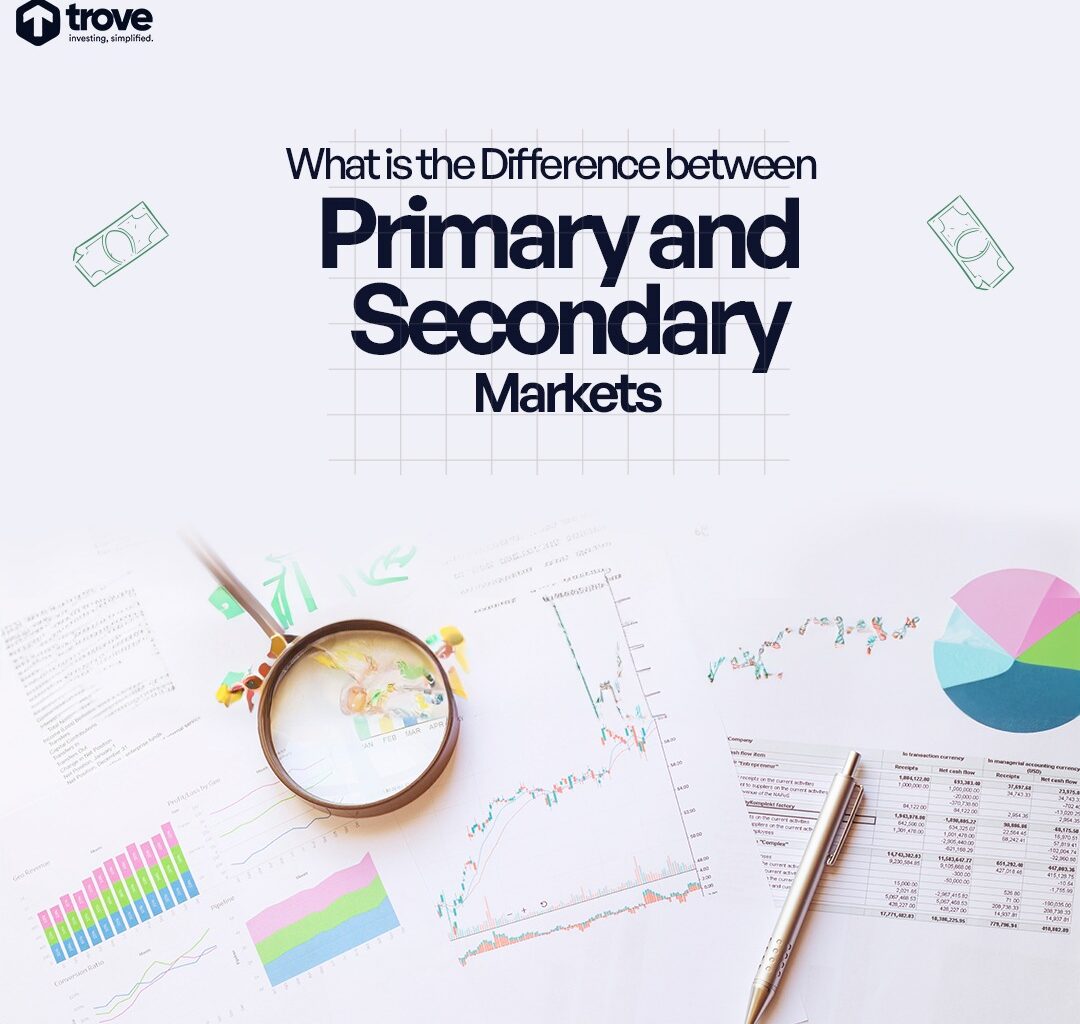When it comes to investing in the stock market, you need to understand the two main platforms where buying and selling take place: primary and secondary markets. Both markets play critical roles in facilitating the exchange of securities, however, they serve distinct purposes and offer unique benefits to investors.
In this blog, you will find out the differences between primary and secondary markets, how they function, their characteristics, and the opportunities they present. We’ll also highlight how using platforms like Trove Finance can simplify your investment journey.

What is Primary and Secondary Market in the Stock Market?
Understanding Primary Stock Market
The primary market is where securities are created and sold for the first time. This market is crucial because it is where companies raise capital to finance their operations, expansion, or new projects.
When a company decides to go public and sell shares to the public for the first time, it conducts an Initial Public Offering (IPO).
Key Features of the Primary Market
- Issuance of New Securities: The primary market deals with the issuance of new securities. When a company issues stocks or bonds, they are sold directly to investors.
- Capital Raising: It’s a platform where companies raise funds for the first time. Investors buy shares directly from the company, providing it with the necessary capital.
- Direct Transaction: The transactions that occur in the primary market happen between the issuer (the company) and the buyer (the investor). In other words, there are no intermediaries involved in this initial sale.
- Price Determination: The price of securities is typically determined by the issuing company in consultation with investment bankers or underwriters.
Understanding Secondary Stock Market
Once securities have been issued in the primary market, they are traded among investors in the secondary market. This market does not involve the issuing company; instead, it is a platform where existing securities are bought and sold.
Features of the Secondary Market
- Trading of Existing Securities: This is where the buying and selling of existing securities happen. Investors trade stocks, bonds, and other financial instruments among themselves.
- Liquidity: One of the primary functions of the secondary market is to provide liquidity. Investors can easily buy or sell securities, making it a critical component of the financial system.
- Price Fluctuation: Prices in the secondary market fluctuate based on supply and demand. Various factors can contribute to price fluctuation which includes company performance, economic indicators, and market sentiment, influence these prices.
- Intermediaries: Transactions in the secondary market typically involve intermediaries such as brokers and dealers, who facilitate the buying and selling process.
Why is it Important to Understand the Market?
Knowing the difference between the primary and secondary markets is vital for making informed investment decisions. Here are a few reasons why:
- Investment Strategy: Understanding where you are buying your securities—whether directly from the company in an IPO or from another investor in the secondary market—can influence your investment strategy and timing.
- Risk Management: Each market carries different risks. For instance, investing in an IPO might be riskier because it involves a new and untested security. In contrast, the secondary market provides more information and history about the securities being traded.
- Financial Planning: By understanding these markets, you can better plan your investments to align with your financial goals, whether they involve long-term growth, income generation, or diversification.
Why Choose Trove Finance
Trove Finance is a platform designed to make investing accessible and straightforward. It caters to both new and seasoned investors, providing tools and resources to help you invest wisely.
Here’s how Trove Finance can support your investment journey:
1. Simplify Buying and Selling of Stocks
Trove finance simplifies the process of buying and selling stocks. Making it easier for you to invest in any Nigerian, US, and Chinese stock/ETFs of your choice.
2. Educational Resources
One of the standout features of Trove Finance is its commitment to educating its users. The platform provides a wealth of resources at Trove University to help you understand the intricacies of the stock market and make informed decisions.
3. User-Friendly Interface
Investing can be complex, but Trove Finance’s intuitive interface makes it easy to navigate the markets. So, if you’re buying your first share, the platform is designed to be user-friendly.
Read Also: Understanding Large-Cap and Small-Cap Stocks

Conclusion
Taking control of your financial future begins with understanding the fundamental markets that drive investment opportunities. The primary and secondary markets are the backbone of the investment landscape, and grasping their differences is essential for making informed decisions.
By leveraging platforms like Trove Finance, you can simplify your investment process, access valuable educational resources, and make informed decisions that align with your financial goals.






